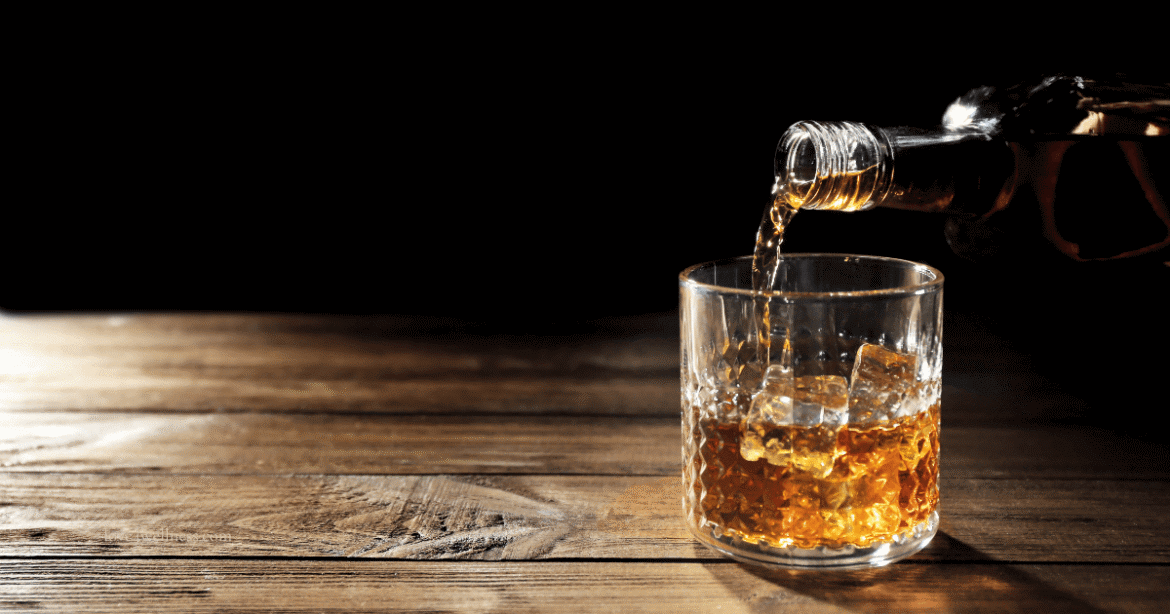The Sneaky Saboteur
You’ve cleaned up your diet (The Best Diet for Men Over 40 to Burn Visceral Fat), committed to your workouts (Your Action Plan: The Best Exercises to Fight Visceral Fat in Men Over 40), and optimized your sleep (The Sleep Advantage: Optimising Rest to Lower Cortisol and Burn Visceral Fat). You’re doing everything right—so why is that stubborn belly fat still clinging on? The link between alcohol and visceral fat might be the missing piece in your puzzle.
Alcohol is a sneaky saboteur. It doesn’t just add empty calories—it hijacks your metabolism, disrupts your hormones, and sends a powerful signal to your body: “Stop burning fat. Start storing it.” And where does it love to store it? Right around your abdomen.
If you’re serious about reversing visceral fat, understanding the three key ways alcohol derails your progress is essential.

#1 The Liver Overload: Metabolic Priority Stop
When you drink, your body treats alcohol as a toxin, not a nutrient. Your liver, which handles both fat metabolism and detoxification, immediately shifts into emergency mode.
- The Problem: The liver must process ethanol (alcohol) before handling fats or carbs. During this time, your fat-burning process is shut down. Calories from alcohol—and whatever food you eat with it—are shunted straight to storage.
- The Visceral Fat Connection: Because visceral fat sits close to the liver, it drains fatty acids directly into the portal vein. When the liver is overwhelmed by alcohol, it cannot process these efficiently, leading to rapid fat accumulation and even fatty liver disease—a condition strongly tied to high visceral fat levels.
#2 The Hormonal Mayhem: Cortisol, Testosterone, and Hunger
Alcohol disrupts the delicate hormonal balance required for fat loss. Let’s break down how it disrupts the three key hormones that influence fat storage.
- The Cortisol Spike (The Stress Signal)
Drinking—even moderately—is a metabolic stressor. Your body responds to this toxin by elevating Cortisol (The Cortisol Connection: How Stress Fuels Visceral Fat in Men Over 40).
High cortisol tells your body to store energy, specifically around your visceral fat cells, which are highly sensitive to this signal.
- The Testosterone Drop (The Muscle Loss)
Alcohol is toxic to the Leydig cells that produce testosterone (The Hormonal Landscape: Testosterone, Cortisol, and Visceral Fat in Men Over 40).
Since Testosterone is vital for maintaining muscle mass (your metabolic engine), its suppression by alcohol further slows your resting metabolism, making it easier to gain weight and harder to lose visceral fat.
- The Hunger Hormone Hijack
Alcohol dulls your satiety cues and amplifies hunger hormones. It often leads to the “drunchies” (drunk munchies), causing you to crave salty, fatty, and high-carb foods—the exact villains you worked hard to eliminate in your diet plan.
#3 The Hidden Calorie Bomb and Sugar Shock
Many popular drinks contain staggering amounts of added sugar, delivering a double whammy of toxins and storage signals, making them one of the most efficient fat-storage triggers.
| Drink Type | Impact |
| Large Margarita / Sweet Cocktail | High Sugar + High Alcohol = Maximum Storage Signal |
| Craft IPA / Regular Beer (16 oz) | High Carb Load + Alcohol = Significant Metabolic Pause |
| Wine (5 oz) | Moderate, but can disrupt sleep and elevate cortisol |
- The Insulin Surge: Sugary drinks create sharp blood sugar spikes, demanding large insulin responses. High insulin levels drive visceral fat storage. Alcohol magnifies this effect by impairing your body’s ability to burn any of those calories.
Your Action Plan: 3 Steps to Reduce the Alcohol Load
You don’t need to quit completely—but you do need to cut back significantly if you want to see real visceral fat reduction.
1. Institute “Dry Days”
Schedule at least 3–4 alcohol-free days each week, ideally consecutive. This gives your liver time to recover, detoxify, and shift back into fat-burning mode.
2. Choose the “Cleanest” Option
If you do drink, ditch sugary mixers and beer. Opt for:
- Clear spirits (vodka, gin, tequila) with soda water + lime
- Dry red wine, occasionally
These have lower sugar and fewer calories, reducing the fat-storage impact.
3. Never Drink on an Empty Stomach
Drinking on an empty stomach sends alcohol straight to the bloodstream, causing a rapid spike in metabolic distress. Always eat a meal rich in protein and healthy fats before consuming alcohol to slow absorption and moderate the metabolic impact.
Final Takeaway: Disproportionate Results
Cutting back on alcohol delivers disproportionately powerful benefits for visceral fat loss.
You’re not just removing empty calories—you’re eliminating the single strongest signal that tells your body, “Stop burning fat. Start storing it.”
When you reduce alcohol:
- Your liver resets
- Cortisol levels stabilize
- Testosterone rebounds
- Your metabolism reignites
All of which allow your diet, sleep, and exercise strategies to finally work at full capacity.
Our next post explores the simple yet profound role of water in your fat-burning efforts—how hydration impacts hormones, metabolism, and even appetite regulation.
